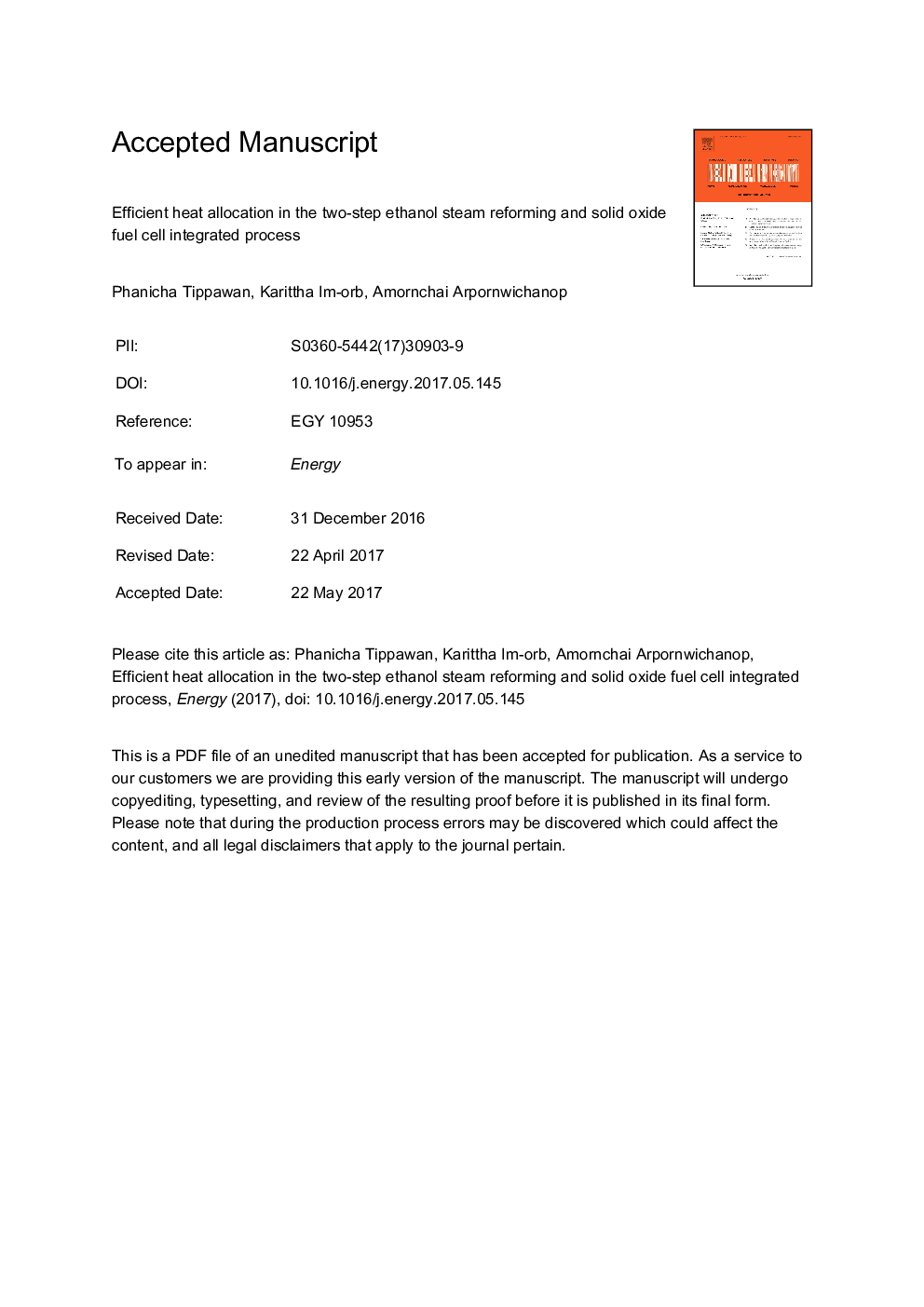| Article ID | Journal | Published Year | Pages | File Type |
|---|---|---|---|---|
| 5476579 | Energy | 2017 | 40 Pages |
Abstract
To avoid a carbon formation in the ethanol steam reforming process from the polymerization of ethylene, a two-step reforming of ethanol via a dehydrogenation reaction and a steam reforming reaction for hydrogen production is proposed in this work. The study of using a CaO sorbent for CO2 capture to enhance the hydrogen production for solid oxide fuel cells is also carried out. Modeling of the two-step ethanol steam reforming and solid oxide fuel cell integrated process based on a thermodynamic approach is performed using a flowsheet simulator. The results show that the presence of CaO in the two-step ethanol steam reforming process has several advantages, such as having higher hydrogen yield, gaining additional heat, and providing a higher power output at a relative low reforming temperature. However, the exergy analysis indicates that this process has a higher total exergy destruction compared to the process without CaO because of the high amount of heat needed in the regenerator. Therefore, a heat allocation technique based on the first and second laws of thermodynamics is used to identify the optimal operating condition. The results show that when the reformer is operated at a temperature of 800Â K and a steam-to-ethanol ratio of one, the minimum total exergy destruction to power ratio can be achieved and heat is also sufficient.
Related Topics
Physical Sciences and Engineering
Energy
Energy (General)
Authors
Phanicha Tippawan, Karittha Im-orb, Amornchai Arpornwichanop,
